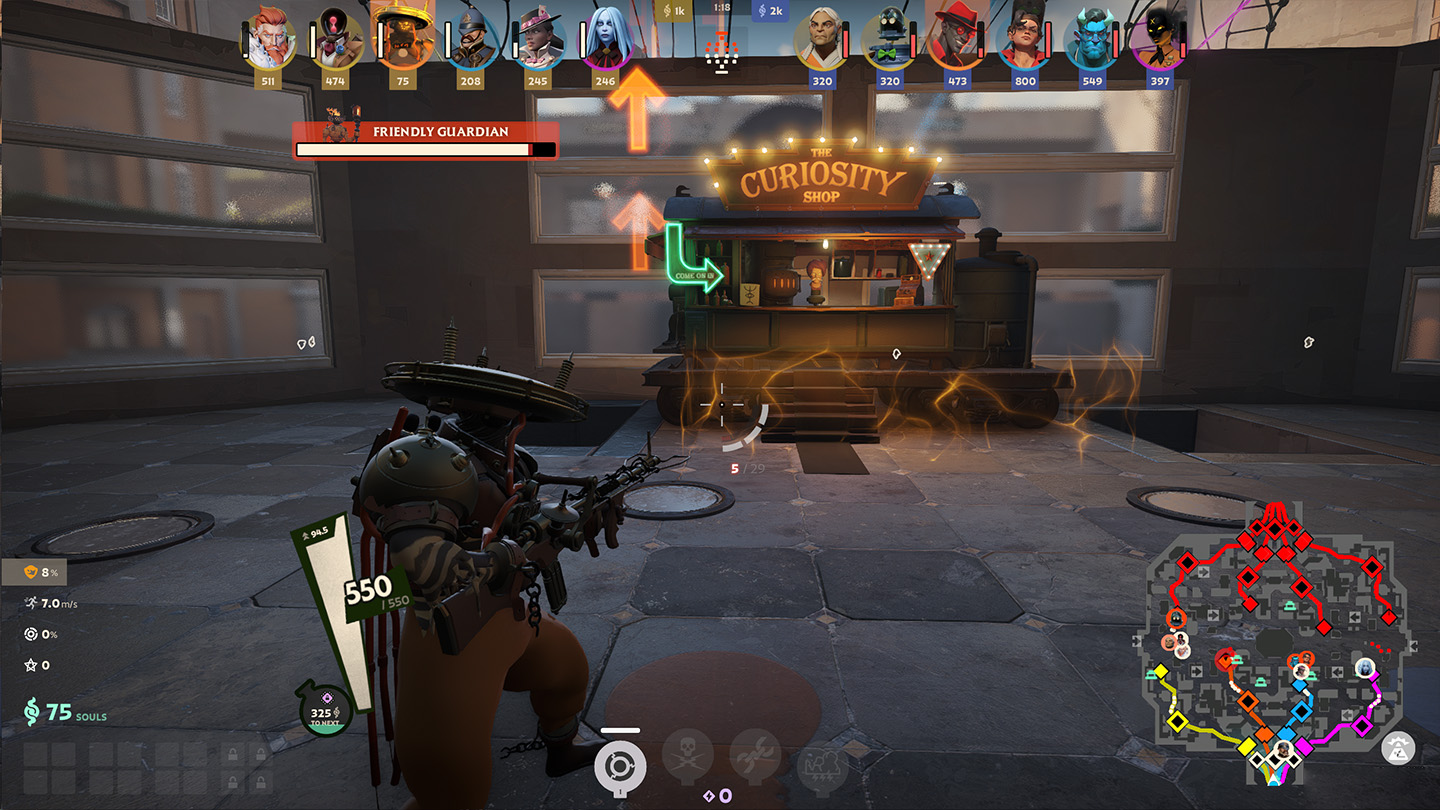The latest update to Deadlock is one of the biggest yet, featuring a full shop overhaul, major improvements to the build system, map reworks, and quality-of-life updates across the board. Whether you’re a returning player or new to the game, here’s a clear breakdown of the most important changes.
Shop System Overhaul
The in-game item shop has been completely reworked to make purchasing and upgrading items more intuitive and strategic:
- Item slots are now universal, meaning any item can go into any slot.
- The total number of slots has been reduced from 16 to 12, encouraging tighter, more focused builds.
- Items cost less when you already own a component, making upgrades more efficient.
- Tier bonuses now depend on how much you spend in an item category, rather than how many items you buy. Maxing out a single tree isn’t always the most rewarding strategy.
- The shop has updated visuals, renamed items, and will now highlight items that are ready to be upgraded.
These changes are designed to reduce confusion and allow players to adapt their item builds more easily during matches.
Build Creation and Customization
Deadlock’s build system now offers powerful new tools for planning and sharing loadouts:
- A brand new fullscreen Build Browser lets players manage their builds more easily.
- You can copy another player’s build after a match and save it locally.
- Build tags allow you to describe and categorize your builds using icons and traits like melee, complexity, or spirit focus.
- Suggested imbue targets and sell priorities help streamline purchasing, especially when using the Quickbuy system.
- Optional categories can be marked in builds, and the UI now includes drag-and-drop features for removing or reorganizing items.
These changes make it much easier to create, understand, and refine your build strategies.
Quickbuy Improvements
Quickbuy has been redesigned to be faster and more user-friendly:
- A larger, clearer Quickbuy queue is now available next to the shop.
- Players can queue their entire build with one click or clear the queue entirely.
- The default hotkey has changed from Shift + B to G.
- There is now an option to automatically queue your selected build at the start of a match.
- Multiple bugs causing failed purchases through Quickbuy have been fixed.
Map and Base Redesign
Several parts of the game map have been redesigned to improve flow, strategy, and visual clarity:
- Both team bases have a new interior and exterior design, including raised ceilings and improved layout.
- Shrines, hallways, and tunnels have been repositioned for better access and balance.
- The mid lane and both outer lanes have seen structural changes, including new juke spots, adjusted rooftops, and updated navigation.
- New “Juke Closets” and breakable objects have been added across the map to support creative movement and ambushes.
- Key landmarks like the Department Store, Theater, and Skybridges have received visual updates.
These changes are meant to make navigation easier and matches more dynamic.
Gameplay Changes
Several gameplay systems have been refined or rebalanced:
- Players now start with 400 souls.
- The losing team gains more resources based on how far behind they are.
- Barriers (formerly called Shields) now use a simpler resistance system.
- All hero stats have been rebalanced to work better with the new shop system.
- Powerups spawn earlier in the game and now scale sooner.
- Zipline boosts are less powerful, and their cooldown is longer.
- Walker and objective mechanics have been adjusted to make engagements more fair and readable.
Soul orb visuals and behavior have also been updated to improve clarity and consistency during matches.
Movement and Game Feel
Movement controls have been refined to feel smoother and more responsive:
- Wall jumps now respond better at slower speeds and give different momentum based on movement direction.
- Mantling while crouching adds a small slide boost.
- Issues with wall jump fatigue, corner boosting, and zipline momentum have been addressed.
- Networking improvements reduce jitter, improve hit registration, and help smooth interactions between players of different ping levels.
Hero Updates
Almost every hero in the game has received adjustments, ranging from stat tweaks to new animations and visual effects. Some of the most notable changes include:
- Abrams, Dynamo, and McGinnis received major model or ability updates.
- Multiple abilities across heroes have been rebalanced, fixed, or visually improved.
- Voice lines and sound design for many heroes have been updated or remastered.
These updates aim to bring heroes in line with the reworked item and economy systems while improving clarity during combat.
Sound and UI Enhancements
Deadlock’s audio and user interface have been polished for a cleaner experience:
- Voice lines, weapon sounds, footsteps, and environment audio have been rebalanced and expanded.
- Match start conversations are more dynamic and less repetitive.
- The minimap has been updated to reflect layout changes and show powerup types.
- Shop and item tooltips now show spirit scaling, clearer cooldown indicators, and new labels like “Ability Range.”
- The HUD displays more useful information, including when items are upgradeable.
These updates help players stay more informed and better react during matches.
Final Thoughts
This update represents a major step forward for Deadlock, with systems redesigned to be more intuitive, flexible, and rewarding. The changes encourage smarter planning, faster decision-making, and more meaningful interactions across the board. Whether you’re a veteran or jumping in for the first time, now is a great time to explore the game with a fresh perspective.
If you want a deeper breakdown of individual hero or item changes, check the full patch notes on Steam. Otherwise, load up Deadlock and see how the battlefield has evolved.
